Cover image: Eleven, the Mage by Pauline Voss
Note: this article contains spoilers for the Netflix Original Series Stranger Things.
Since the very first season dropped in 2016, I’ve been a fan of Stranger Things. I was born in the early 1980s, and grew up among the small towns of rural Illinois, not unlike the fictional town of Hawkins, Indiana—sleepy towns where high school basketball helped animate the nightlife because there wasn’t much else to do, and where kids would bike from friend’s house to friend’s house before they were old enough to drive.
The kids of Stranger Things were the kids I looked up to when I was first getting on the bus to go to school. There are differences, of course, but everything from the early editions of D&D to the bikes and the clothes to the music remind me of the decade of my life where I felt the safest I’ve ever felt.
Of course, in Stranger Things, everything is immediately turned upside down. The town of Hawkins is seemingly cursed when, due to experiments gone wrong at a local laboratory, tragedies of increasing scale begin to plague the once peaceful community. Children missing, crops blighted—the investigations of our intrepid “kids on bikes” reveals a gate to another world, which they must seal if they are to save their town and their loved ones.
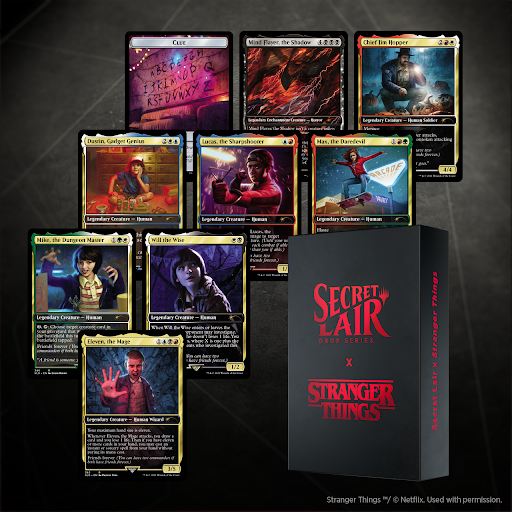
The Secret Lair x Stranger Things drop.
Last October, when I saw that a Stranger Things Secret Lair was being released, I sprung for it. But, as my colleague Travis Norman has discussed, I cooled on it after the initial hype. I have let it sit unopened on my desk since it arrived months ago, clueless as to whether or how to use the cards in decks. I’ve been fascinated by the strong “investigate” theme for quite some time, but never felt compelled to build a deck around it, when so many other options keep coming out.
The conjunction of Stranger Things 4 and Commander Legends: Battle for Baldur’s Gate, however, gave me an idea: Gates.
The banning of Golos, Tireless Pilgrim left Maze’s End gates decks without an obvious commander. Baldur’s Gate introduces Nine-Fingers Keene, a three-color commander that cares about having gates, but makes Maze’s End less viable. I needed to find a five-color commander, and few struck me as much more than placeholders, until I watched Stranger Things 4, and realized that so much of the plot revolved around the Big Bad Evil Guy (dubbed “Vecna” by the Hawkins kids) having to open a set number of gates from the Upside Down in order to “win the game.”
Secret Lair x Stranger Things’s partner mechanic, Friends Forever, enables players to partner Eleven, the Mage with Mike, the Dungeon Master, to build a five-color EDH deck. Problem solved: I’ve stumbled on a gates deck that thematically ties gates to the commander, and a guiding theme to constrain deck-building so I don’t get bored of the deck simply doing its thing and winning or not, and a win-condition that encourages play that assembles combinations of permanents over many turns, making this a deck that wants to play light-hearted, casual EDH. Everything I want in an EDH deck.
Furthermore, because I conceived of this deck for an article and it’s not something pre-existing that I’m writing about, I’m going to try to keep it budget friendly. At the time of writing, I’ve kept the estimated price under $80 at Card Kingdom, so that folks can build and play it without spending too much. Thanks to the Universes Beyond reprinting, the Secret Lair cards fit within the budget.
The Plot
Stranger Gates is a deck about solving mysteries and opening gates. Our win-condition is Maze’s End, which wants us to get ten gates into play, and we run a number of cards that help us find gates and synergize with them in other ways to turn these otherwise lackluster lands into an asset. Along the way, we have a few “sub-games” we can attempt to make work for fun: summoning Vecna via The Book of Vile Darkness; turning Mind-Flayer, the Shadow into a creature; and getting eleven cards in hand, so Eleven does the thing.
These won’t seal the Upside Down for good, but they’ll at least give us a sense of satisfaction if our win-con doesn’t work out.
The Thematic Core of the Deck: Secret Lair x Stranger Things
Eleven, the Mage & Mike, the Dungeon Master
Eleven and Mike helm this deck primarily for the sake of flavor while granting access to five colors. Like most five-color gates commanders, they don’t contribute directly to our win-condition.
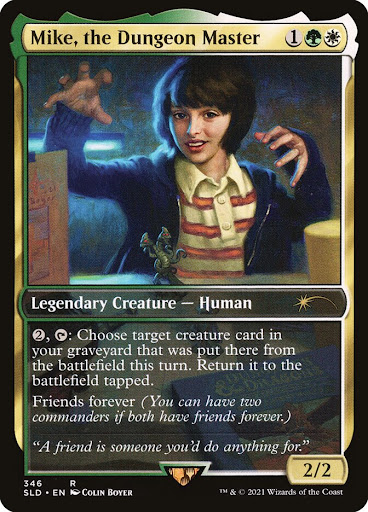
While goldfishing this deck, I rarely cast them. However, a real game isn’t like goldfishing, and in a real game, sometimes putting a body on board or drawing another card is absolutely necessary. Because we don’t have to worry about our win-con depending on them, we can cast them without much worry of them eating removal. Use them strategically for their card advantage or soak some damage if opponents start looking your direction.
Will the Wise, Chief Jim Hopper, and Max, the Daredevil
The rest of the Stranger Things Secret Lair was heavy on the investigate mechanic, which has inspired the “looking for clues” subtheme in this deck. Will, Hopper, and Max all generate clues, which in my playtesting, tend to draw us anywhere from five to eight additional cards in an eleven-turn game.
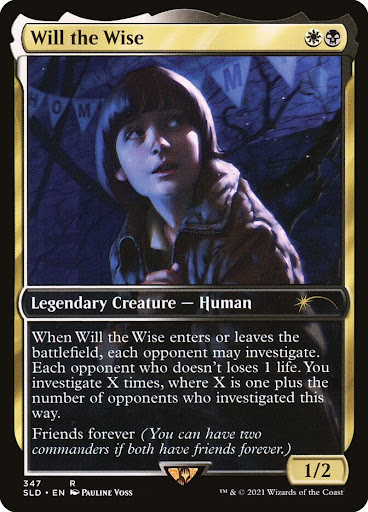
That incidental draw can keep us moving if the trail starts to go cold on our gates. Eloise, Nephalia Sleuth (perhaps a government agent?) will also help us dig through our deck when we sacrifice tokens (like clues).
Dustin, Gadget Genius, and Lucas, the Sharpshooter
Dustin and Lucas have clear clue synergies. Dustin Henderson is here to help us activate our clues. Generating the two mana we need for incidental card draw or a sacrifice trigger keeps our lands free for other spells.
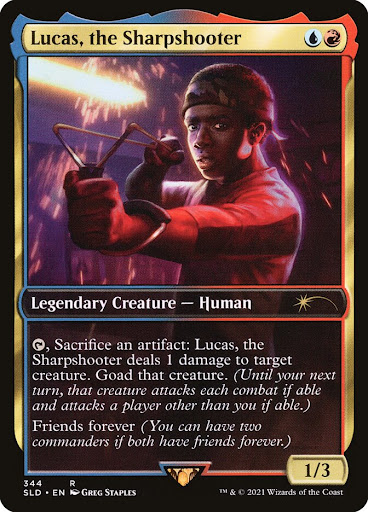
Lucas, similarly, can make good use of clue tokens to finish off small creatures or goad large ones, keeping our opponents’ monsters distracted while we sneak around the Upside Down.
Hawkins National Laboratory // The Upside Down
The staging ground for the housing and training of Eleven and the other empowered children, Hawkins National Laboratory synergizes with our clue theme, and can flip, appropriately enough, to the Upside Down to reanimate one of our creatures.
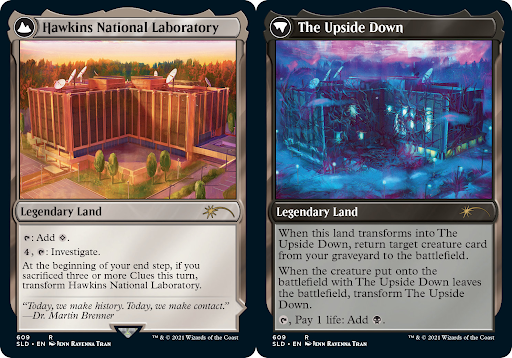
If the creature leaves the battlefield again, it turns back, allowing us to use it to investigate once again.
The Mind Flayer(s)
Though originally thought to be the mastermind of the Upside Down, ST4 reveals that the Mind Flayer was molded by Vecna as a way of spreading his influence.
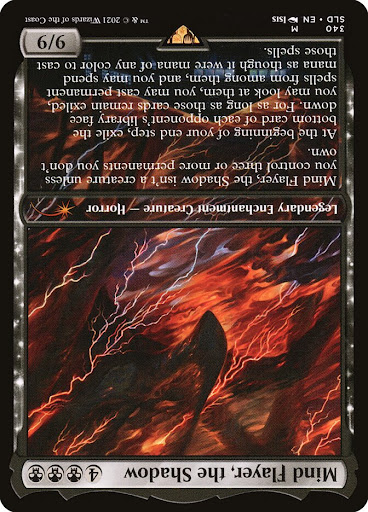
Magic’s Mind Flayer, the Shadow asks us to find ways to control permanents we don’t own, and to that end, we’re also employing Mind Flayer from Adventures in the Forgotten Realms as well.
Other Thematic Elements
Vecna
As with the Demogorgon and the Mind Flayer before him, “Vecna’s” name is borrowed from a D&D villain fresh on the minds of the Hawkins kids. Stranger Things 4’s Vecna preys on victims in his attempt to open enough gates to bring the Upside Down into Hawkins, and the Hawkins kids and the viewers only learn this through assembling enough clues over the course of the season (until the villainous exposition at the end).
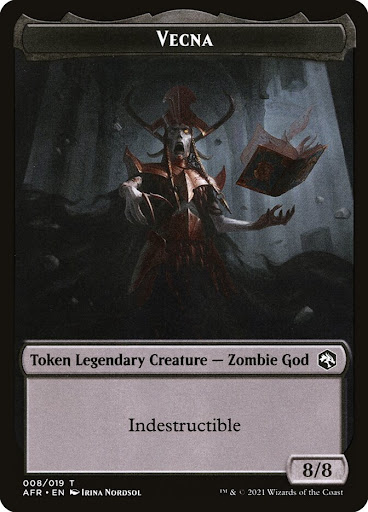
Putting it all together (in this case, The Book of Vile Darkness, Eye of Vecna, and Hand of Vecna) gets us a powerful indestructible creature that generates zombie tokens, draws us a card each turn if we want, and swings for 8 or more damage while in combat.
Fans of the series will also recognize the allusion in Midnight Clock.
Demogorgons and Demodogs
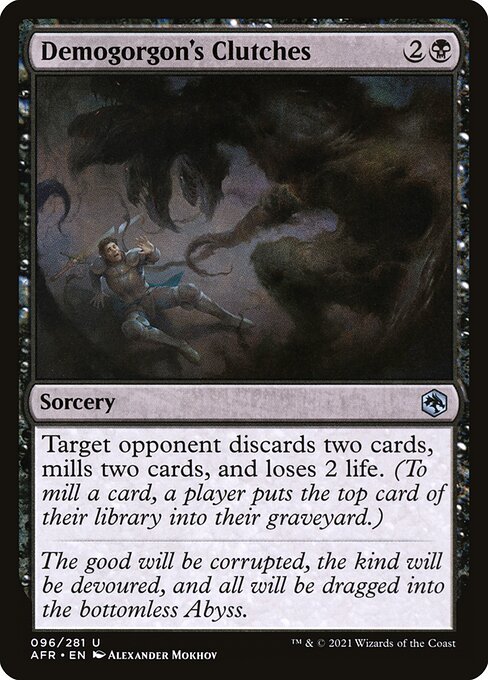
Demogorgon’s Clutches, Hellfire Mongrel, and Rampaging Baloths are all here to reference and represent the worst of the worst from season one, and recurring monsters from subsequent seasons. Rampaging Baloths making more beasts as we “open” more gates is thematic, and can help give us a potential alternate way to close out a game if we can drop them on curve and follow them with some late ramp.
Tentacles Squelching
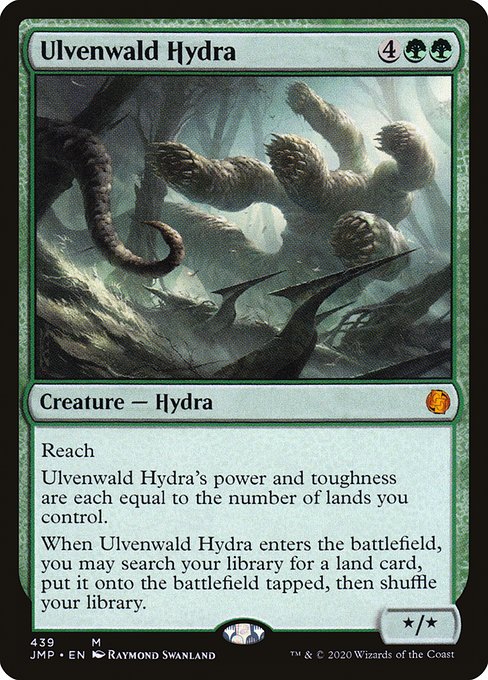
Mind Flayers like Illithid Harvester and Zellix, Sanity Flayer have thematic callouts to the the “tadpole” that Will Byers coughs up, and the “Hive Mind” of undulating, tentacular vines, demobats, and demogorgons of the upside down. The writhing heads of the Ulvenwald Hydra, which grow in power based upon the number of lands (gates) we play, and which can open a gate when summoned, also fit thematically.
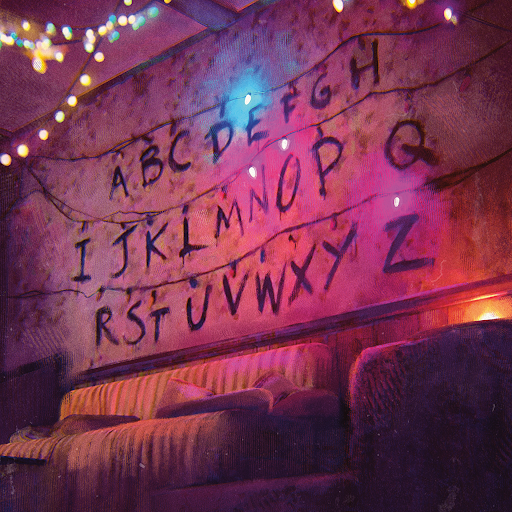
Clue Token by Jenn Ravenna Tran
The List
The list I’ve put together for this Flavor is Function deck is budget, aiming to be as inexpensive as possible while still being able to do the thing. Price estimations from various sites have this deck coming in between $65 and $85, with only a couple of cards coming in above $5 in the least expensive iterations (which run the “Universes Within” versions of the Stranger Things cards).
Here are some other breakdowns that might help visualize what’s going on:
Ramp & Land Tutor: Animist’s Awakening, Arcane Signet, Circuitous Route, District Guide, Dungeon Map, Enter the Unknown, Expedition Map, Explore, Explore the Underdark, Gatecreeper Vine, Hour of Promise, Midnight Clock, Nine-Fingers Keene, Open the Gates, Realm Seekers, Reap and Sow, Reshape the Earth, Scare-Tiller, Sol Ring, Summer Bloom, Sylvan Scrying, Tempt with Discovery, Ulvenwald Hydra
Removal: Bar the Gate, Fateful Absence, Foul Play, Gates Ablaze, Gone Missing, Path to Exile, Putrefy, Root Out
Other Card Draw & Further Investigation: Chief Jim Hopper, Confront the Unknown, Eleven, the Mage, Eloise, Nephalia Sleuth, Eye of Vecna, Guild Summit, Lonis, Cryptozoologist, Max, the Daredevil, Ongoing Investigation, Survive the Night, Thorough Investigation, Ulvenwald Mysteries, Will the Wise
Running Up That Hill (Playing the Deck)
Strangers Things One and Two (Early Game)
This deck is super casual; it gets off to a slow start. Our best case scenario begins on turns one through three with Sol Ring, Expedition Map, Arcane Signet, or Will the Wise, followed up with any number of cards that let us find gates or investigate.
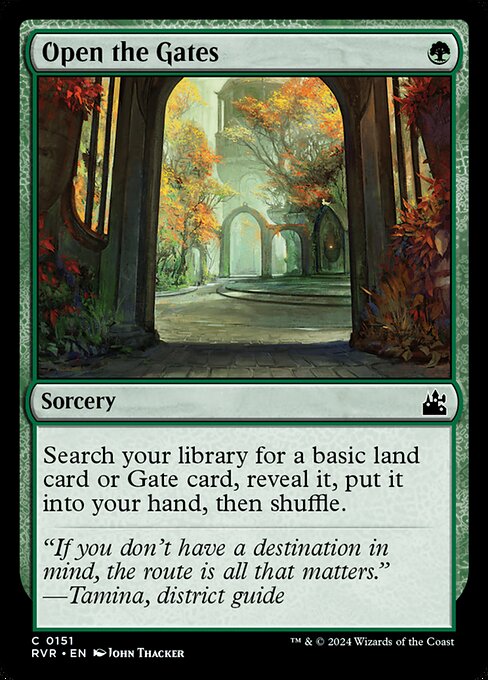
Finding Gond Gate early will help us to keep pace with opponents, as well, as it makes all our gates come into play untapped.
Stranger Things Three (Midgame)
After initial turns of ramp and minor set-up, the pulsating tentacles of value begin to slither further and further out. From turn five on, cards like Chief Jim Hopper (Sophina, Spearsage Deserter) will help us to continue generating clues, and Weirding Wood or Baldur’s Gate can help us generate enough mana to keep sacrificing them to draw the cards we need, ensuring we hit our land drops and find more ramp and Maze’s End.
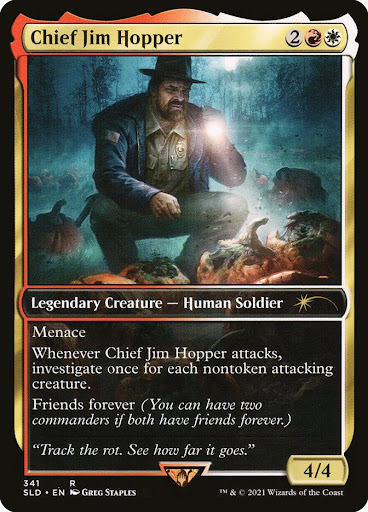
Cards like Gates Ablaze and Lucas, the Sharpshooter (Bjorna, Nightfall Alchemist) will help to keep our opponents’ threats at bay while we hunt for our win cons, and incidental damage from our creatures that incentivize attack. Turns five to eight should see a pretty regular pattern of clue generation and sacrifice.
Stranger Things Four and Five (Endgame)
In ideal situations, turn 9 is probably when we would expect to begin approaching a win, though this is ambitious. Goldfishing the deck shows consistency in winning via Maze’s End by turn 11—who would have thought?—and not much earlier, for two main reasons.

The first is simply that gates aren’t the only lands in the deck, so our ramp cards that find lands and sometimes put them onto the battlefield are often compensating for when we have had to play non-Gates as our lands for turn. The second is that by eschewing cards that don’t fit within the rough budget of this build, we are cut off from the cards that could make this build much faster.
Upgrading the Deck
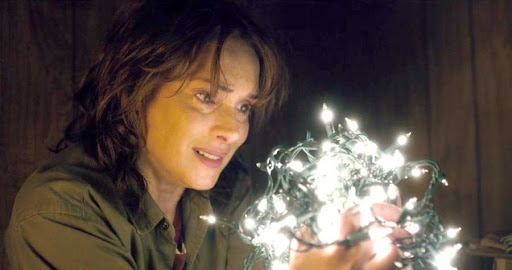
I’ve intentionally avoided more expensive cards for this build, but if you have them, I especially recommend adding Azusa, Lost but Seeking (Joyce!) and other landfall staples, like Exploration, Burgeoning, and so on, as well as cards like Demonic Tutor (Henry Creel?), which can help us find specific cards, like Maze’s End, which are vital to our success.
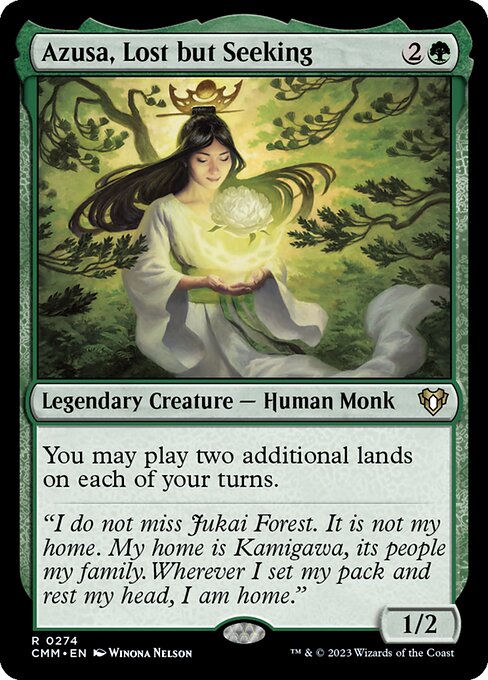
Tireless Tracker synergizes with our flavor and clue subtheme, and Amulet of Vigor can help us make better use of our gates and Maze’s End—even helping us win nearly immediately if we can ramp into Reshape the Earth.
While we wait for the next season
Deckbuilding is an ongoing process of crafting, testing, and revision, and no decklist is ever final, in my opinion.
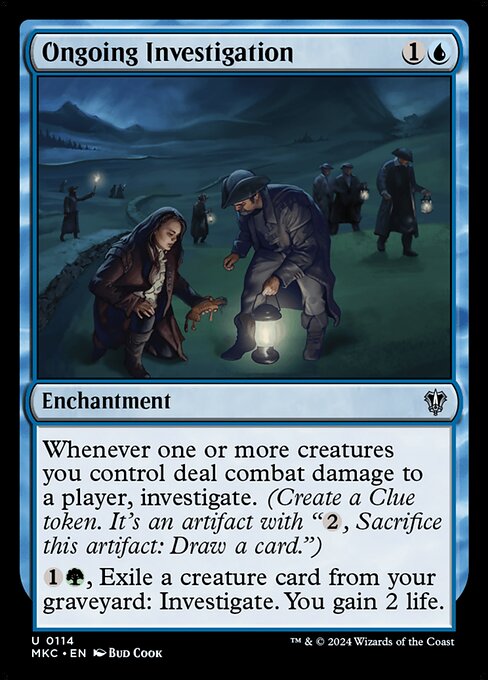
How would you upgrade this deck? What are your favorite pieces of sweet Gates tech? How “optimal” can we make this deck while it still remains a Stranger Things themed gates deck? Let me know on twitter!
Until next time.
Jacob Torbeck is a researcher and instructor of theology and ethics. He hails from Chicago, IL, and loves playing Commander and pre-modern cubes.

